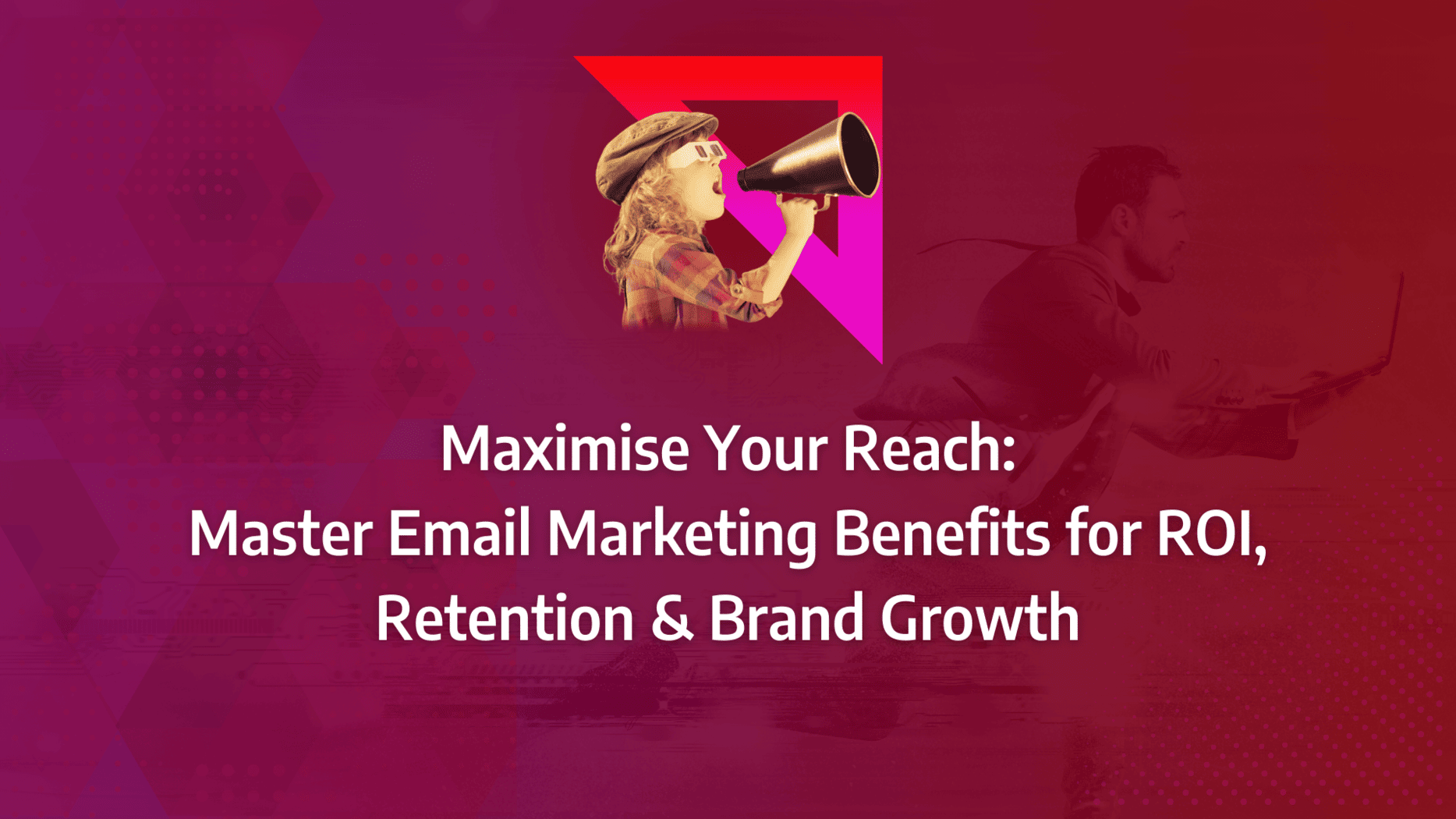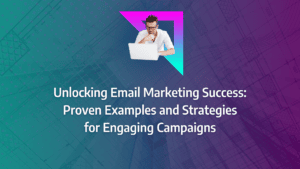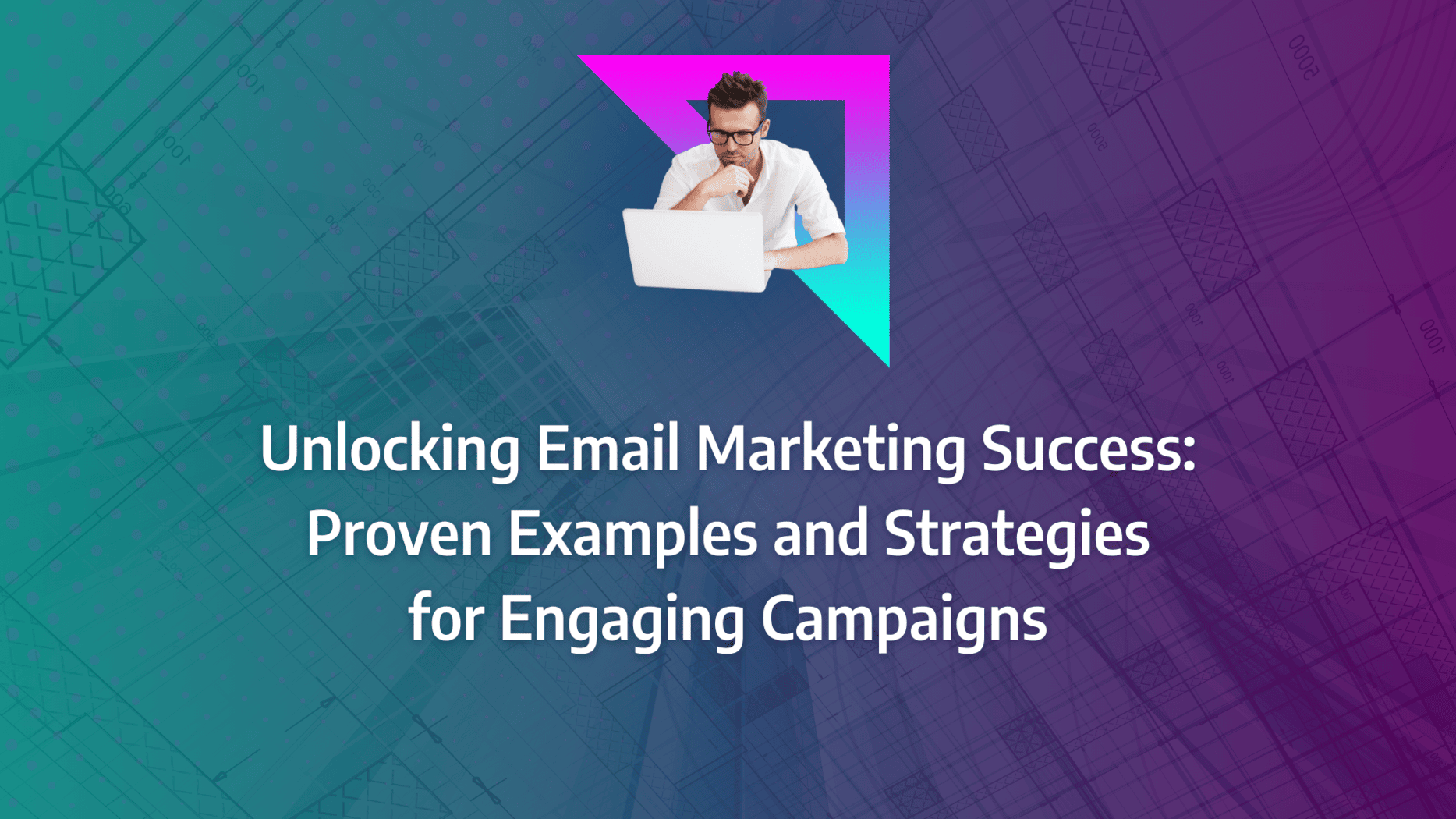Email marketing remains one of the most powerful tools in your digital marketing arsenal, but are you truly harnessing its full potential? If you’re finding it challenging to convert subscribers into loyal customers or struggling to see a significant return on your email campaigns, you’re not alone. Many businesses miss out on the immense benefits that a well-crafted email marketing strategy can offer.
Imagine a world where your emails not only reach your audience but also resonate deeply, driving engagement, boosting retention, and ultimately growing your brand. The key lies in understanding and implementing strategies that transform your email marketing from a routine task into a robust revenue driver.
In this guide, you’ll discover practical steps and proven tactics to elevate your email campaigns, ensuring they deliver maximum ROI and foster lasting customer relationships.
- Personalisation is Crucial: Tailor your emails to individual customer preferences to enhance engagement and increase the likelihood of conversions.
- Segmentation Enhances Targeting: Divide your email list into segments based on behaviour or demographics to send more relevant content, boosting both open and click-through rates.
- Automation Saves Time and Improves Efficiency: Use automated workflows to streamline your email campaigns, ensuring timely and consistent communication with your audience.
- Data-Driven Decisions Lead to Better Results: Regularly analyse your email metrics, such as open rates and conversion rates, to refine your strategies and improve performance.
- Compelling Content Drives Action: Create content that speaks directly to your audience’s needs and interests, making your emails not just informative but also actionable.
- Consistency Builds Trust: Maintain a regular email schedule to keep your brand top-of-mind, which can significantly improve customer retention and loyalty.
- Mobile Optimisation is Essential: Ensure your emails are mobile-friendly, as a significant portion of your audience will be reading them on their smartphones.
- Test and Refine Your Strategies: Regular A/B testing of different elements such as subject lines, content, and CTAs can help you identify what works best for your audience.
The Advantages of Email Marketing
Email marketing’s ability to target different audience segments makes it a powerful tool. By leveraging data about your subscribers, you can create highly targeted campaigns that resonate with your target customers.
For those new to email marketing, creating personalised content might seem daunting. However, it can be as straightforward as using a subscriber’s first name in the email. Research indicates that adding a subscriber’s first name to the subject line can increase email open rates by up to 23%.
As your email list expands and you become more adept at email marketing, segmentation becomes invaluable. Group your audience based on factors such as age, income level, gender, or the length of time they have been customers. This allows for more tailored content that can significantly enhance engagement.
What Matters Most?
A strong subject line can significantly increase open rates and overall email effectiveness. Emphasising permission-based marketing builds a foundation of engaged subscribers, leading to long-term relationships built on trust. Additionally, integrating storytelling into your emails typically creates emotional connections with your audience, enhancing engagement and fostering loyalty that can drive repeat business.Get In Touch
Building Stronger Customer Relationships
Email marketing excels in creating stronger customer relationships by demonstrating value and guiding your audience on how to take the next step with your business. Once someone joins your email list, you have the opportunity to send them helpful, relevant content regularly.
Not every email should be about selling products or services. Focusing on providing value ensures your customers look forward to your emails. Highlighting your social media accounts within your emails and encouraging subscribers to connect with you on these platforms can further build credibility and engagement. If a subscriber is intrigued by an email, they can easily learn more about your offerings through your social media links.
Achieving Content Marketing Goals
If you regularly publish content, email marketing is an excellent channel for distribution. Whether you create graphics, write blog posts, or record videos, sharing this content with your email subscribers can increase website traffic. Effective content that meets your audience’s needs can lower bounce rates, increase time spent on your site, drive conversions, and improve other critical metrics related to your content strategy.
High ROI: $44 Return on Every $1 Invested
Email marketing is renowned for its impressive return on investment (ROI) and cost-effectiveness. Among the various marketing channels, email marketing stands out for delivering high ROI, making it a popular choice for businesses aiming to maximise their marketing budgets. By continually testing and adapting strategies based on audience responses, businesses can optimise their email marketing benefits. This iterative approach ensures that best practices are employed, leading to the highest possible returns on email marketing spend.
Source: Campaign Monitor
Automating the Sales Cycle and Enhancing Client Service
One of the significant email marketing advantages is its unparalleled ability to automate the sales cycle and improve client service. Email marketing serves as a powerful sales tool, allowing you to set up and schedule campaigns that guide potential customers through the purchase stages using triggered emails. Studies show that the click-through rate for triggered emails is three times higher than that for newsletters, underscoring their effectiveness.
Automated email sequences can convert subscribers into customers without requiring constant manual intervention. By preparing follow-up emails in advance, you can:
- Significantly reduce the need for additional advertising
- Save considerable time and reduce the necessity for a large team of experts
- Enhance customer service by providing timely updates on order statuses, which boosts client confidence
- Improve customer retention rates with welcome email series or post-purchase notifications
Creating Brand Awareness
Consistent email communications are instrumental in elevating brand awareness. While your website and advertisements play a role, regular emails keep your brand top of mind. Given how frequently people check their emails on mobile devices, leveraging this digital space is essential. Notably, nearly half of buyers express a preference for receiving weekly promotional emails from their favourite brands.
To become a preferred brand, craft engaging email newsletters with captivating subject lines and interactive content. Whether promotional or informational, your emails should showcase your brand’s uniqueness and value. The more your customers interact with your brand assets, such as your logo or slogan, the stronger their subconscious connection to your brand will be. This heightened brand awareness can lead to increased conversion rates as you progress.
By adhering to these strategies, you can fully harness the benefits of email marketing campaigns. Integrating these approaches ensures you achieve the highest email marketing advantages, enhancing both your ROI and customer relationships.
The Do’s and Don’ts of Email Marketing
Email marketing, when executed correctly, can be a powerful tool for your business. However, missteps can lead to issues such as SPAM complaints, low open rates, and high unsubscribe rates. Here are six strategies to help you avoid these pitfalls and fully realise the benefits of email marketing campaigns.
Do: Build a Quality Email List: Investing in a quality email list is crucial. Avoid purchasing lists with unqualified leads that are unlikely to engage with your emails. Instead, focus on organically building your list and re-engaging inactive subscribers through targeted campaigns. This strategy will enhance your email marketing benefits by fostering a more engaged audience.
Do: Send a Variety of Email Formats: Maintaining your audience’s interest requires a mix of email formats. Long-form emails, short-form messages, and emails featuring graphics can all contribute to a dynamic email marketing strategy. This variety can enhance buyer engagement, increase email clicks, and expand your brand’s reach, thereby maximising the advantages of email marketing.
Do: Test Your Subject Lines: Subject lines are critical to your email’s success. Use A/B testing to find the most engaging and eye-catching subject lines. By comparing the performance of different subject lines and measuring open rates, you can optimise your approach and ensure your emails are opened and read.
Don’t: Send Generic Emails in Bulk: Sending generic emails to your entire list can be counterproductive. It’s important to segment your email list based on specific needs and pain points. For example, distinguish between potential home sellers, homeowners trying to sell, and those content with their current home. Targeted content increases relevance and improves both open and click-through rates, enhancing the overall email marketing advantages.
Don’t: Send Emails All at Once: Timing is everything in email marketing. Sending emails simultaneously to all subscribers can be ineffective due to varying time zones. Schedule your emails to coincide with optimal opening times in different regions. This approach can significantly boost open rates and engagement, contributing to the benefits of email marketing campaigns.
Don’t: Include Videos Directly in Emails: Including videos directly in your emails can slow down load times and affect accessibility. Instead, use links or screenshots that lead to the video hosted on your website. This method maintains the benefits of including multimedia content without compromising the user experience, resulting in higher open and click rates.
Our Tactical Recommendations
Segmenting your email lists to tailor content for different audience groups is crucial; we often see higher engagement and conversion rates when our messages are relevant. Optimising email design for mobile devices ensures effective reach, as mobile-friendly emails typically result in better open and click-through rates. Moreover, utilising follow-up emails strategically after initial outreach helps maintain engagement, and clients often find that timely follow-ups significantly enhance their response rates.Get In Touch
What types of emails should I use in my marketing strategy?
Promotional Emails
Promotional emails primarily focus on informing potential customers about your product or service. These emails often include coupons, discounts, access to gated content, or announcements of special events. As the most common type of marketing email, it is crucial to make yours stand out. Highlight the benefits and features of your product or service, especially when offering a discount or coupon code. This helps customers understand the value beyond just the discount. Including the offer in the subject line can also entice readers to open the email rather than just reading the subject line.
Newsletter Emails
Newsletter emails are typically sent on a regular schedule and can contain company updates, event announcements, and blog content. These emails not only reach new customers but are also an excellent way to engage existing ones by sharing useful content, customer success stories, and ongoing promotions. To maximise the effectiveness of your newsletters, clearly define the goal of each email and focus on including only the most relevant information and a strong call to action (CTA).
Source: Campaign Monitor
Survey Emails
Survey emails are used to gather quantitative data from your customers. These can be sent as embedded questions within the email, through direct email responses, or via links to your website. Survey emails can collect feedback on recent purchases, gauge customer satisfaction, and inform future projects. They provide valuable insights into what content matters to your audience and can highlight areas for improvement in your offerings.
Abandoned Cart Emails
Abandoned cart emails are triggered when a user adds items to their shopping cart but does not complete the purchase. These emails act like a helpful reminder, often sweetened with a discount or free shipping offer, to encourage the customer to finalise their purchase. While more common in e-commerce, they can also be adapted for service-based businesses to remind potential clients of uncompleted actions.
Re-Engagement Emails
Re-engagement emails target inactive subscribers to win back their interest. Using a CRM or email marketing platform, you can identify contacts who haven’t interacted with your brand recently. Effective re-engagement emails might share new product updates, offer discounts, or solicit feedback. Even if some re-engagement efforts fail, they help clean your email list, leaving you with a more interested audience.
For example, Clear employs best practices in their re-engagement emails by starting with product updates, clearly stating pricing, and including a CTA directing users to a discount. These emails effectively illustrate how Clear simplifies the customer journey, showcasing the brand’s value.





